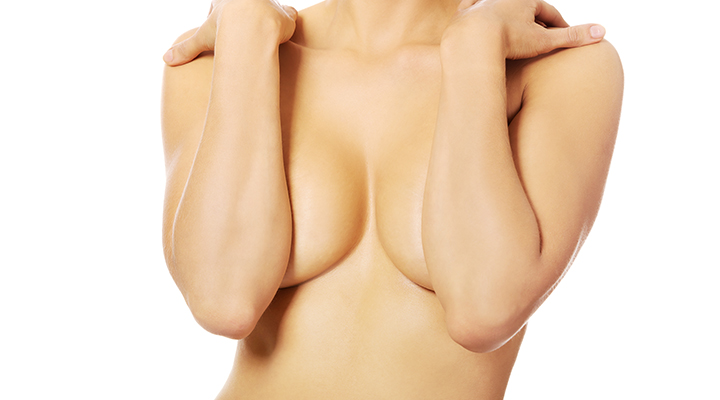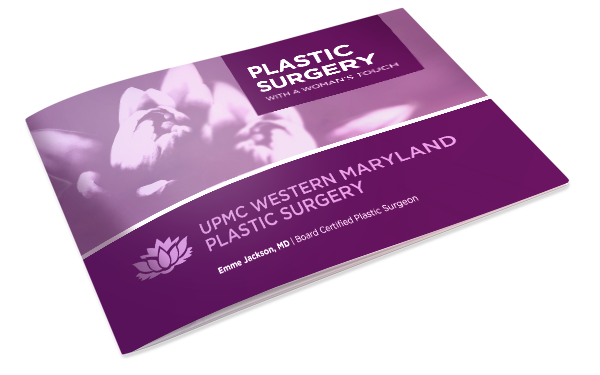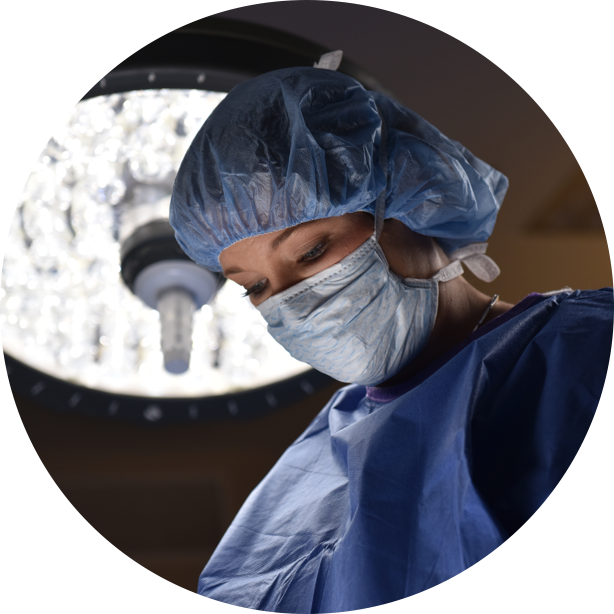
Breast Reconstruction
Various methods can be used in breast reconstruction surgery including breast implants with tissue expansion and tissue flap procedures. During your consultation, your surgeon will review the different breast reconstruction techniques available and together determine the appropriate treatment plan for you.
The reconstruction method best suited to you depends on many factors, including:
- Your health
- Amount of available tissue
- Past and future radiation therapy
- Treatment plan
- Current breast size
- Body type
Breast reconstruction is an elective procedure; however, many insurance companies will cover the cost of the surgery. Each case is unique and we are available to guide you throughout your reconstruction process.
Isn’t it time to take the next step?
QUESTIONS?
Download our Breast Reconstruction Brochure

CONTACT US
Western Maryland Medical Arts Center
12052 Willowbrook Road, Suite 460
Cumberland, MD 21502
Hours of Operation:
Tuesday and Thursday 8 am – 5:30 pm
Friday 8 am – 12 pm
HELPFUL LINKS

Breast Reconstruction Procedures
Most women with breast cancer are treated with an excision of the breast cancer itself followed by radiation of the remaining breast. This treatment has remained a mainstay of treatment. It preserves the remaining breast with a typically good cosmetic result. The decision for mastectomy is also a complex one. Many factors are considered which include tumor type and size, patient genetics, breast appearance and size, and patient desires. After the preoperative education and decision making process regarding the cancer treatment is completed, a consideration for breast reconstruction is undertaken.
Breast reconstruction can be performed at the time of mastectomy, or it can be delayed. Many women opt for an immediate reconstruction, but the ultimate result is cosmetically equal whether the reconstruction is immediate or delayed. Some patients, due to several different factors, may be better suited for a delayed reconstruction versa an immediate reconstruction (to be discussed with your surgeon during your consultation). Good general and emotional health is also an important factor to consider with immediate reconstruction patients.
When considering types of breast reconstruction, a division would exist between tissue expansion (implant) and autologous (created from one’s own body) reconstructions. This may be oversimplified because sometimes the techniques are mixed. But, for the most part, it makes the techniques easier to separate.
It is my contention that most patients are very well served with implant reconstructions. This technique and the technology it requires have been greatly refined over the course of the last decade. The implants are an “off the shelf” product making tissue expansion the least physiologically challenging of the breast reconstructions. Particularly for bilateral reconstructions, the cosmetic result can be excellent. Remember that implants are the principle means by which plastic surgeons correct cosmetic breast deformities in non-cancer patients. Careful attention is always given to the unaffected breast using standard cosmetic surgery techniques to provide as close a match to the reconstructed breast as possible.
Debate continues among academic plastic surgeons as to the appropriate place of autologous reconstruction in technique selection. There are those who consider them first time interventions. Most would agree that is the chest wall has been radiated, and then an autologous or mixed implant/autologous reconstruction is appropriate. The cosmetic results of these surgeries are more patients and surgeon dependent. They always carry with them more risk and longer periods of recovery. The most popular are the Lat. Dorsi which uses the back, and the TRAM flap which uses the muscles of the abdomen. There are now reconstructions in which the tissue needed for reconstruction is moved on a single blood vessel sewn into place with a microscope. These challenging surgeries are very surgeon depended and are reserved for surgeons who have made the performance of these complex operations a specific subspecialty of their practice.
The final patient group for discussion is the woman who has undergone a lumpectomy and radiation only to have a poor cosmetic result. In most cases, I would recommend a completion mastectomy with autologous reconstruction in this population.
Breast reconstruction has matured to become a safe and reliable technique with a wide application to a great variety of patients. If you are considering a breast reconstruction, consult your board certified plastic surgery breast specialists for a review of the best techniques for you.
Recovery from Breast Reconstruction Surgery
This type of surgery requires an inpatient hospital stay. The patient will most likely be discharged to go home the next day. A drain at the surgical site sends blood and other bodily fluids into a hollow ball that the patient will learn how to change before she goes home. It typically remains in place until the output is below 30cc a day. The surgeon will provide instructions on wound care and the type of support garment to wear after discharge.
Bruising and swelling can remain for up to eight weeks after surgery to reconstruct the breasts. Lying on the back at night and taking medication on schedule can relieve these issues. Patients should avoid overhead lifting, sexual activity, and strenuous sports for about six weeks. This is also the time most patients return to work, although it can be longer for jobs that are physically demanding. It is not unusual for tissue to take up to two years to heal and scars on the breast and donor site to fade.
Having a mastectomy and then breast reconstruction can both be emotionally draining experiences that require a period of adjustment. Women who surround themselves with support tend to cope with these changes better than those who do not.

Kathleen Kight, Breast Reconstruction
Judy Donahue, Breast Reconstruction
JoAnn Flinn, Breast Reconstruction
Schedule a Consultation

HELPFUL LINKS
CONTACT US
Western Maryland Medical Arts Center
12052 Willowbrook Road, Suite 460
Cumberland, MD 21502
Hours of Operation:
Tuesday and Thursday 8 am – 5:30 pm
Friday 8 am – 12 pm
UPMC Western Maryland Plastic Surgery
Plastic Surgery With A Personal Touch
Western Maryland Medical Arts Center
12502 Willowbrook Road, Suite 460
Cumberland, MD 21502
UPMC Outpatient Center
23789 Garrett Highway
McHenry, Maryland 21541
